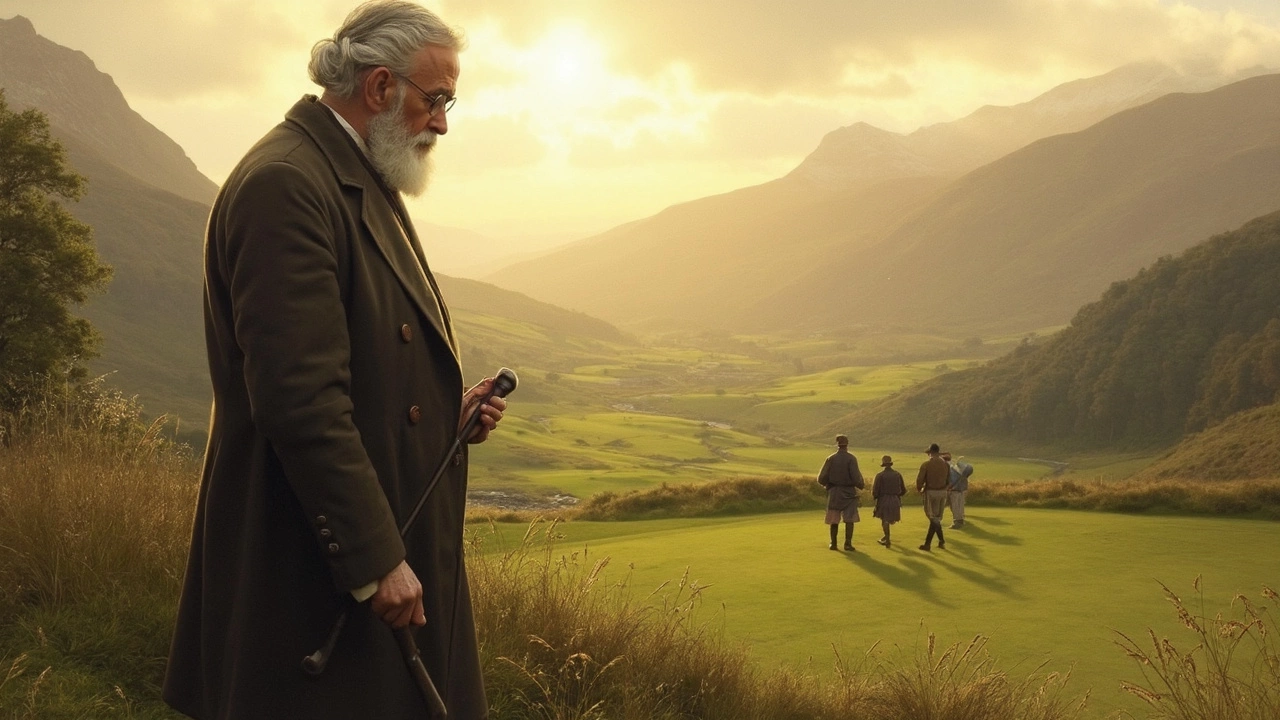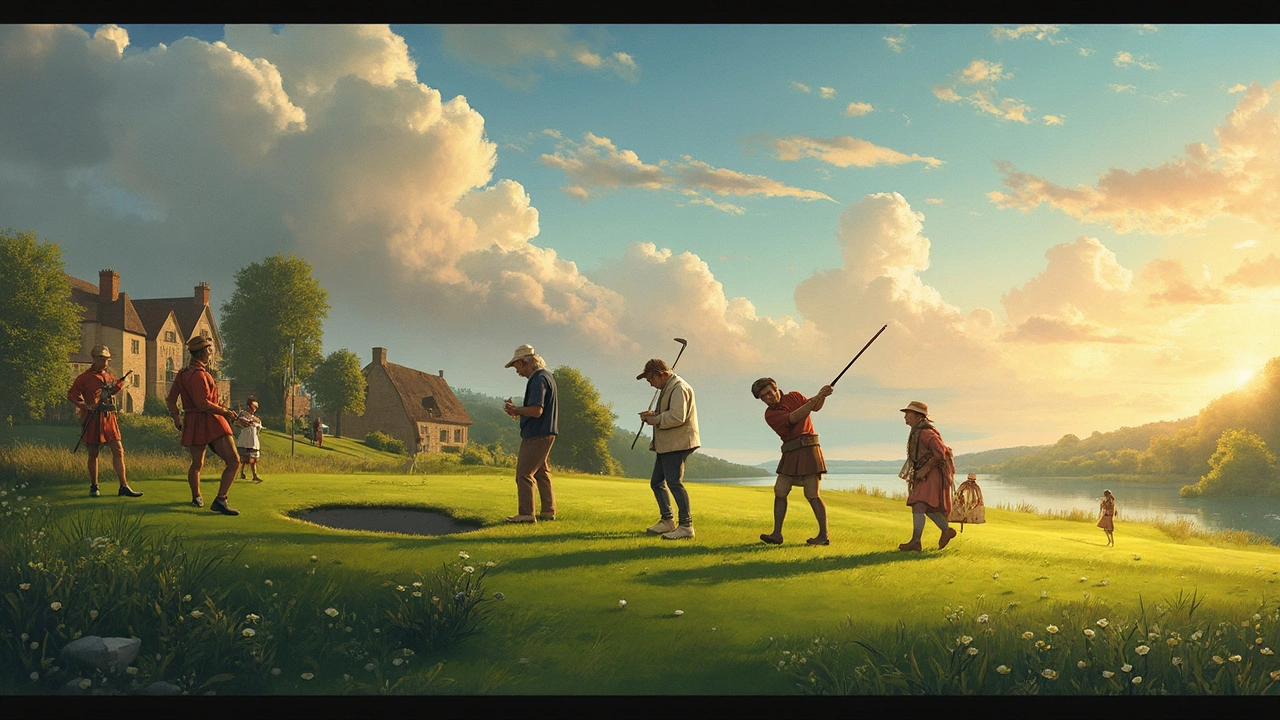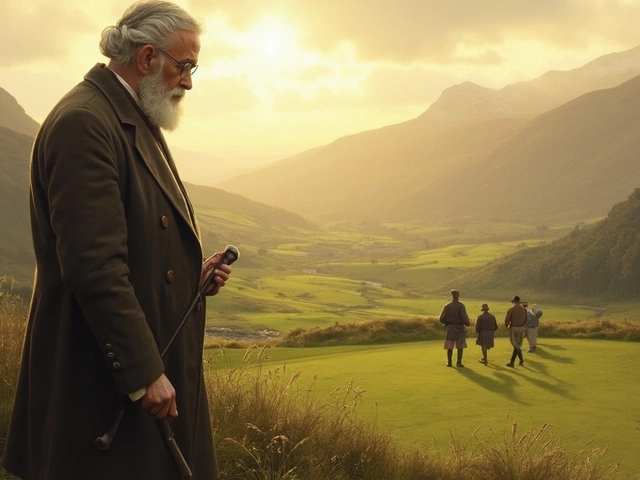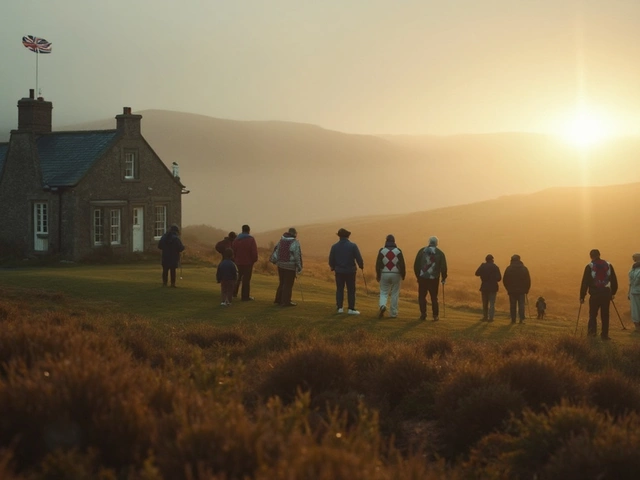Who is the Father of Golf? Facts, Myths, and Course Secrets

Picture this: rolling hills, homemade clubs, and a bunch of folks chasing balls across rough Scottish turf. Golf wasn’t born overnight, and the whole idea of a single 'father' is way less clear than people claim. Still, if you hang around any serious course—especially in Scotland—one name comes up more than any other: Old Tom Morris.
But before you crown anyone as the one true dad of golf, it actually helps to know where the game came from and what makes someone deserve that title at all. History is messy, with rules and courses evolving over hundreds of years in different towns. It’s not just about swinging clubs—it’s about building the places where the game feels alive. If you want to really understand who shaped those legendary fairways and greens, you have to dig into not just the people, but the wild stories around them.
- Digging Up the Roots: Golf’s True Beginnings
- Enter the Legend: Old Tom Morris Explained
- Did Old Tom Invent Golf Courses As We Know Them?
- Other Names in the Mix
- How Early Courses Changed the Game
- Tips for Exploring Golf’s History Today
Digging Up the Roots: Golf’s True Beginnings
If you look back far enough, golf origins don’t point to just one date or one country. The game most people call golf has roots in 15th-century Scotland, with the first written record popping up in 1457—when the Scottish Parliament actually banned it because folks were skipping archery practice to swing clubs! That’s wild, but it proves the game's grip on people even back then.
Of course, hitting stones with sticks wasn’t new. The Dutch played a game called "kolf" in the 1200s, and even the French had something called "jeu de mail." So, golf is sort of a mashup, but Scotland gave it the shape we recognize today—holes, fairways, and the competition. The golf courses in Scotland, especially St Andrews, are seen as the blueprint for the modern stuff you find all over the globe.
Here’s a quick look at how some early rules and traditions stacked up:
- Early Equipment: Clubs were made from wood, balls from leather stuffed with feathers.
- The First Courses: These were just rough patches of land, not the manicured parks you see today.
- Match Play: People played head-to-head, not stroke play like a lot of modern tournaments.
St Andrews is known as the "Home of Golf"—its first documented play was in 1552, which sounds ancient until you realize people likely swung clubs there much earlier.
Nothing in the early game was standard. Rules, course length, even how to win, changed from town to town. That’s a big reason why the hunt for the father of golf is tricky. The game everybody sees on TV today came from a huge mess of local experiments and quirks, all fused in Scotland’s wild weather and stubborn culture.
Enter the Legend: Old Tom Morris Explained
If you’ve spent even five minutes in a golf clubhouse, you’ve probably heard of Old Tom Morris. Born in 1821 in St Andrews, Scotland, Morris pretty much rewrote the book on what it means to be a golf course designer and greenskeeper. People call him the "father of golf" for a reason—he did things nobody else thought to do at the time.
Morris started out as an apprentice to Allan Robertson (another golf icon) but quickly made a name for himself by paying attention to the land. He didn’t just play on courses—he built them, fixed them, and made them fun. Think about raking bunkers or “dressing” greens to keep them healthy. That was Morris’s thing. He introduced stuff like top-dressing with sand, regular mowing, and managing hazards so golfers would have a fair but challenging round.
He was also the main force behind some of the most famous golf courses ever, including the Old Course at St Andrews. In fact, if you ever get the chance to play in Scotland, odds are good you’re walking on a fairway Morris helped shape. He laid out over 75 courses in the United Kingdom—not a small number even by today’s standards.
And it wasn’t just about design. Old Tom won The Open Championship four times (in the 1860s) and lived to see golf become a worldwide game. He doubled as St Andrews' head greenkeeper and clubmaker. He even taught his son, Young Tom Morris, who ended up breaking records as well.
One quirky fact? Morris got paid £50 a year as Master of the Links at St Andrews. Sounds tiny, but back then it was a big deal. Check out this bit of trivia:
| Year | # of Courses Designed | Open Championships Won |
|---|---|---|
| 1860 | 12 | 1 |
| 1870 | 36 | 4 |
| 1900 | 75+ | 4 |
If you ever see wild undulating greens, perfectly groomed fairways, or tricky pot bunkers—it’s Morris’s style echoing through modern golf. Next time you’re playing your local course, try a little top-dressing on your lawn at home; you’ll get why he was obsessed. The game wouldn’t look the way it does without him, plain and simple.
Did Old Tom Invent Golf Courses As We Know Them?
It’s easy to give Old Tom Morris all the credit for modern golf courses, but things are a bit more complicated. He didn’t exactly invent golf, or invent courses. What he did do was change everything about how courses were built, cared for, and played on. That’s what set him apart from anyone before him.
Before Old Tom, most courses were pretty much just open fields with a few holes here and there. Maintenance? Pretty much just sheep munching the grass. Golfers had to deal with whatever the land offered. Old Tom looked at the land like an artist with an idea. He started shaping bunkers, moving soil, and planting grass in ways that made the game way more strategic and fun.
According to the British Golf Museum, "Morris introduced top-dressing greens with sand, built proper tee boxes, and was one of the first to set up drainage systems." That alone changed how golf courses could look and play, especially in rainy Scottish weather.
“Morris’s impact can still be seen on courses all over the world. From course architecture to greenkeeping, his ideas are everywhere.” – British Golf Museum
Maybe the coolest thing about Old Tom? He created famous courses like the Old Course at St Andrews, Muirfield, and Carnoustie. He also doubled the St Andrews course from 12 to 18 holes in 1857. That’s where the modern standard for course length came from—nearly every course you step onto now has 18 holes thanks to that move.
| Course | Year Redesigned | Notable Features |
|---|---|---|
| St Andrews (Old Course) | 1860s | Double Greens, 18 Holes |
| Carnoustie | 1873 | Strategic Bunkering |
| Muirfield | 1891 | Routed for Modern Play |
If you’re walking a modern fairway, with cut greens and clearly marked tee boxes, you’re seeing Old Tom’s handiwork at almost every turn. Next time you line up a putt or curse at a bunker, give a nod to the real architect who shaped the courses you love today.

Other Names in the Mix
Believe it or not, Old Tom Morris isn’t the only big name popping up in the story of who the father of golf really is. When you start peeling back the facts, you’ll find a few other folks (and even a whole city) in the race for this title.
First up, there’s Allan Robertson. He was Old Tom’s boss at St Andrews, and many call him the world’s first professional golfer. Before Morris made a name for himself, Robertson was running the show—he even hired Tom as his apprentice. Robertson set high standards for equipment making (especially golf balls), and was famous for being almost unbeatable on the course. If you talk to golf historians, they’ll point out that before Old Tom, it was Allan making headlines.
Then there’s James Braid, another Scottish legend. He came a bit later—born in 1870—but his designs and wins racked up fast. Braid shaped over 200 golf courses across the UK and grabbed the Open Championship trophy five times. His style of course design is still copied today, mixing strategy with challenge in a way that stands the test of time.
And you can’t forget the R&A—the Royal and Ancient Golf Club of St Andrews. While not a single person, this club set the early rules, managed the first Open Championships, and kind of became the unofficial headquarters of golf history in the 19th century. Without the R&A, the way golf courses are played and run today would look totally different.
- Allan Robertson: Famous for his unbeatable play and club-making skills, plus his mentoring of Old Tom.
- James Braid: Five-time Open champ and designer of legendary links courses.
- R&A of St Andrews: Makers of the rules and hosts of the oldest golf competitions.
While Old Tom is who most people picture when they hear “father of golf,” it definitely took a team of pioneers—and not just in Scotland—to push the game onto the road it’s on now.
How Early Courses Changed the Game
The very first golf courses didn’t have fairways mapped out with manicured greens like we see today. Back in the 1700s and early 1800s, the "course" was just a stretch of rough land—usually links land right by the sea. People played golf wherever sheep grazed. The wind, the bumps, and even the sheep themselves influenced your shot way more than any modern architect could.
What really changed the landscape (literally and for the sport) were a few ideas that stuck. The most famous is the 18-hole standard. The Old Course at St Andrews set this in 1764, shrinking from 22 holes to 18. Suddenly, all serious clubs followed suit, and that’s why courses across the world stick to that number—no mystery, just tradition based on convenience and habit.
Golf course design took off when guys like Old Tom Morris started shaping the land on purpose. Morris didn’t just mow and smooth out random patches; he made bunkers, planned fairways, and fixed drainage so courses could handle the Scottish weather. That’s the reason The Open has survived everything from wild storms to crowds of spectators. Over at Prestwick and Muirfield, you can see touches that Old Tom left—like big doglegs and sneaky pot bunkers that still leave pros muttering under their breath.
Something most folks don’t know: early courses didn’t have tee boxes like today. You’d just tee off near the last hole. Greens were smaller and slower, making putting a whole different skill. And hazards? They weren’t ornamental; sand bunkers came from actual animal burrows and uneven terrain left by the elements.
If you look at the stats, there’s no denying the impact:
| Course Name | Year Established | Original Holes | Modern Influence |
|---|---|---|---|
| St Andrews (Old Course) | 1552 * | 22 (reduced to 18) | Global standard for 18 holes |
| Prestwick | 1851 | 12 | Hosted first Open, bunker placement trends |
| Musselburgh Links | 1672 | 7 | Introduced early open play |
* Earliest documented golf at St Andrews
The evolution of early golf courses helped turn golf from a local pastime into the international sport it is now. With tradition shaping every corner and hazard, stepping onto an old links course today still feels like stepping back in time—just with better shoes.
Tips for Exploring Golf’s History Today
Digging into golf history feels a lot more real when you actually visit the places, stumble onto old scorecards, or even play a few holes where the legends did. If you want to walk the same turf as Old Tom Morris or see how golf courses have changed, you’ve got options—and you don’t need to be a pro.
- Plan a trip to St Andrews, Scotland: Everyone calls this place the “Home of Golf” for a reason. The Old Course was shaped by Old Tom Morris himself. You can take tours, check out the clubhouse museums, and even play if you’re lucky enough to snag a tee time.
- Check out the British Golf Museum: It’s basically right next door to the Old Course at St Andrews. Expect artifacts, old clubs, and personal items from heavy hitters like Morris. Bring your camera—there’s a ton to see if you geek out on golf origins.
- Spot the old rules and layouts: At places like Musselburgh Links—another ancient course—you can see what “nine holes” really looked like in the 1800s. Spoiler: layouts were way rougher and shorter than today.
- Trace the spread of golf to the US: The Chicago Golf Club, founded in 1892, was America’s first 18-hole course. Their original layout maps and clubhouse photos put the big Atlantic jump into perspective.
- Follow golf history podcasts and YouTube channels: Loads of golf nerds break down myths about who really was the father of golf. You’ll hear how certain shots or courses shifted the sport forever.
- Book local tours at historic clubs: Even in the US, places like Pinehurst and Shinnecock Hills offer guided walks that dish out crazy stories from over a century ago.
Want more context? Check out this quick list of real “oldest courses” to visit:
| Course | Country | Founded |
|---|---|---|
| St Andrews Old Course | Scotland | 1552 |
| Musselburgh Links | Scotland | 1672 |
| Royal Aberdeen | Scotland | 1780 |
| Chicago Golf Club | USA | 1892 |
Don’t forget—most courses love showing off their story. Ask the starter, poke around the clubhouse, or read the plaques out front. Even a quick chat with a caddie can reveal stories you won’t find on Wikipedia. If my daughter Antonia has taught me anything, it’s that half the fun is in the hidden gems right under your nose.



